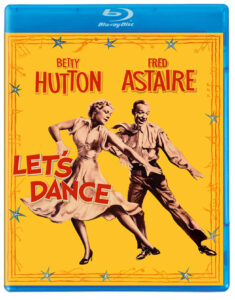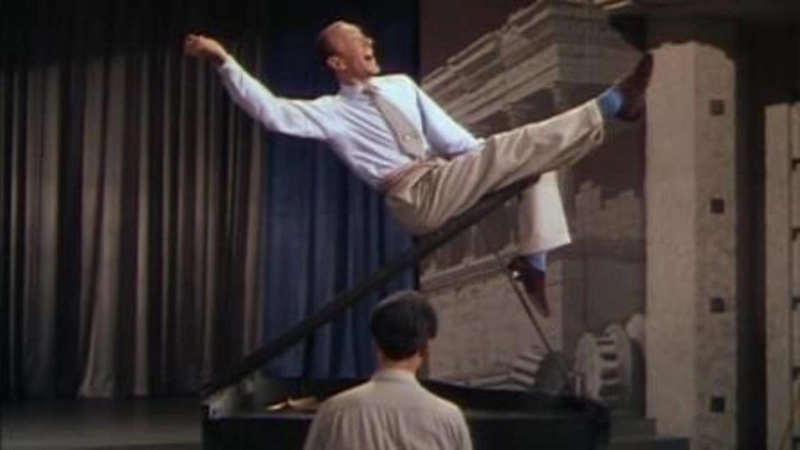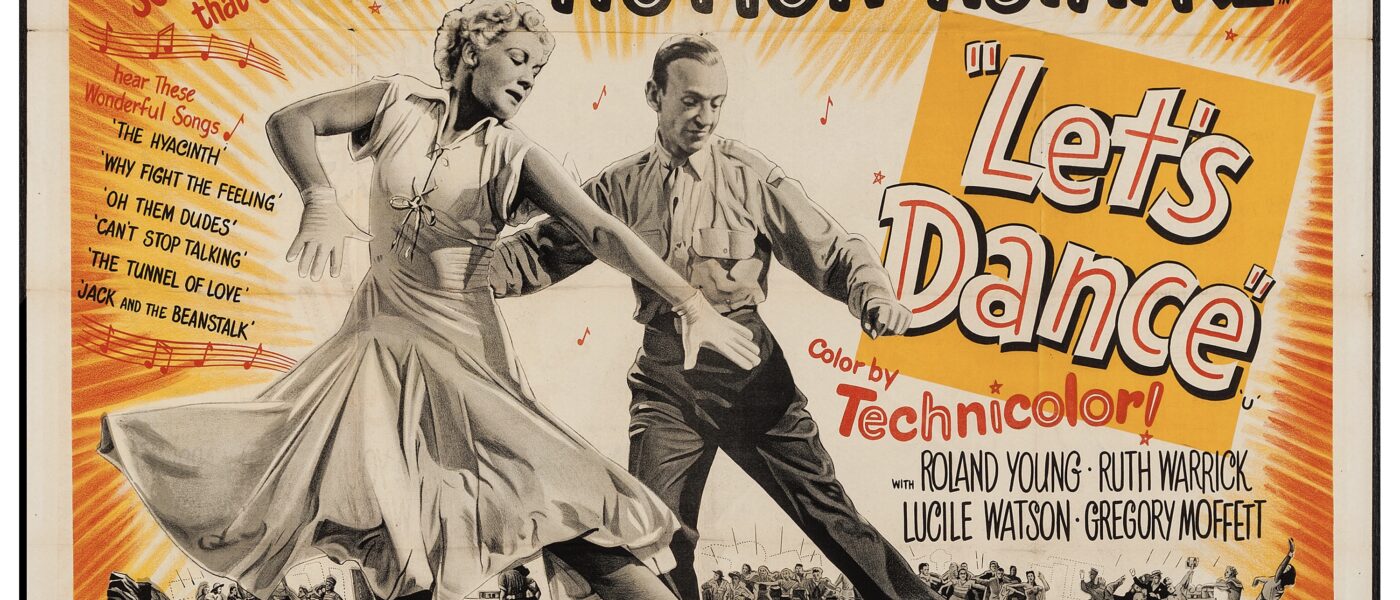Fred Astaire and Betty Hutton Musical Dances out of Obscurity
DIRECTED BY NORMAN Z. McLEOD/ 1950
BLU-RAY STREET DATE: FEBRUARY 13, 2024/KL STUDIO CLASSICS

With one foot in the post-WWII milieu of the 1940s and the other in the uneasy blend of dramatic issues and energized musical numbers of the 1930s, 1950’s Let’s Dance doesn’t know which leg to stand on. Behind the times from the get-go, the film remains sadly creaky in its long danceless stretches. On one hand, Let’s Dance is a vehicle for newcomer Betty Hutton, who goes the extra mile to bring the zany goods and then some. On the other hand, it’s like an old RKO Fred Astaire movie sans Ginger Rogers and in Technicolor. As directed by comedy-great director Norman Z. McLeod (Alias Jesse James; Road to Rio), Let’s Dance is all hands and feet, sidestepping big laughs in favor of a child custody struggle. Perhaps it’s no wonder it’s one of Astarie’s lesser-seen efforts?
Hutton stars as Kitty McNeil, the stage partner and muse, and romantic flame of entertainer Donald Elwood (Astaire). They had a good run entertaining the troops overseas during the war but ended up going their separate ways.
Cut to 1950, both have hit on hard times. His failure to land one of his can’t-miss financial schemes has kept him eating cheap chili in hole-in-the-wall diners. Her desperation to take her young son from the controlling clutches of Serena (Lucile Watson), the wealthy grandmother of her killed-in-action husband has her eating in the very same diner. Humility is no one’s strong suit, but once the truth comes out, they soon end up on stage, together again.

Image credit: High-Def Digest
Author/film historian Lee Gambin is always reliable to absolutely fill an audio commentary track with all manner of sprawling insights; his track for Let’s Dance is no exception. At 112 minutes, this is not the shortest of running times to talk through, but in listening to Gambin, one might think he’s not going to have enough time. Leaving no stone unturned, he even talks at considerable length about Astaire’s costar of decades prior, Ginger Rogers. Rogers has nothing to do with Let’s Dance, aside from the fact that when we see Astaire dancing with anyone else, we always wish it was her instead.
Gambin rightfully and merrily sings the praises of Hutton, landing an extremely apt comparison between her and fellow musically skilled star Judy Garland. Not only are both at their best when allowed to cut loose in clownish performances (“clownish” literally, in the classical sense), Gambin reminds us that Hutton found her greatest success in replacing Garland in Annie Get Your Gun. While that film shot up the box office with wild fervor, Let’s Dance fizzled the very same year. I guess there was only room enough for one Betty Hutton musical in 1950.
Even still, Hutton is clearly and effectively working her tail off here, at times upstaging Astaire. Let’s Dance, however, can’t dance its way out of long stretches of non-musical doldrums. McLeod can never reconcile that the plot requires Hutton to switch on a dime between buoyant show-woman and worry-racked about losing her little boy. It doesn’t help that the little boy is a joyless deer-in-the-arc-lights kid that the film insists is cute but isn’t. (Honestly, little Gregory Moffett is better in Robot Monster. And that’s saying something).

For all its faults, vintage musical fans should be thrilled with this Blu-ray. Not only has it made this previously obscure musical newly accessible, but it also really looks terrific. The pleasing Technicolor palate is presented in high style courtesy of a 2019 HD master provided by the film’s home studio, Paramount Pictures. The numbers (including the Western-themed “Oh, Them Dudes,” featuring Hutton in cowboy drag, Astaire’s wonderful “Piano Dance”), when they do happen, make Let’s Dance a fine score from KL Studio Classics.


